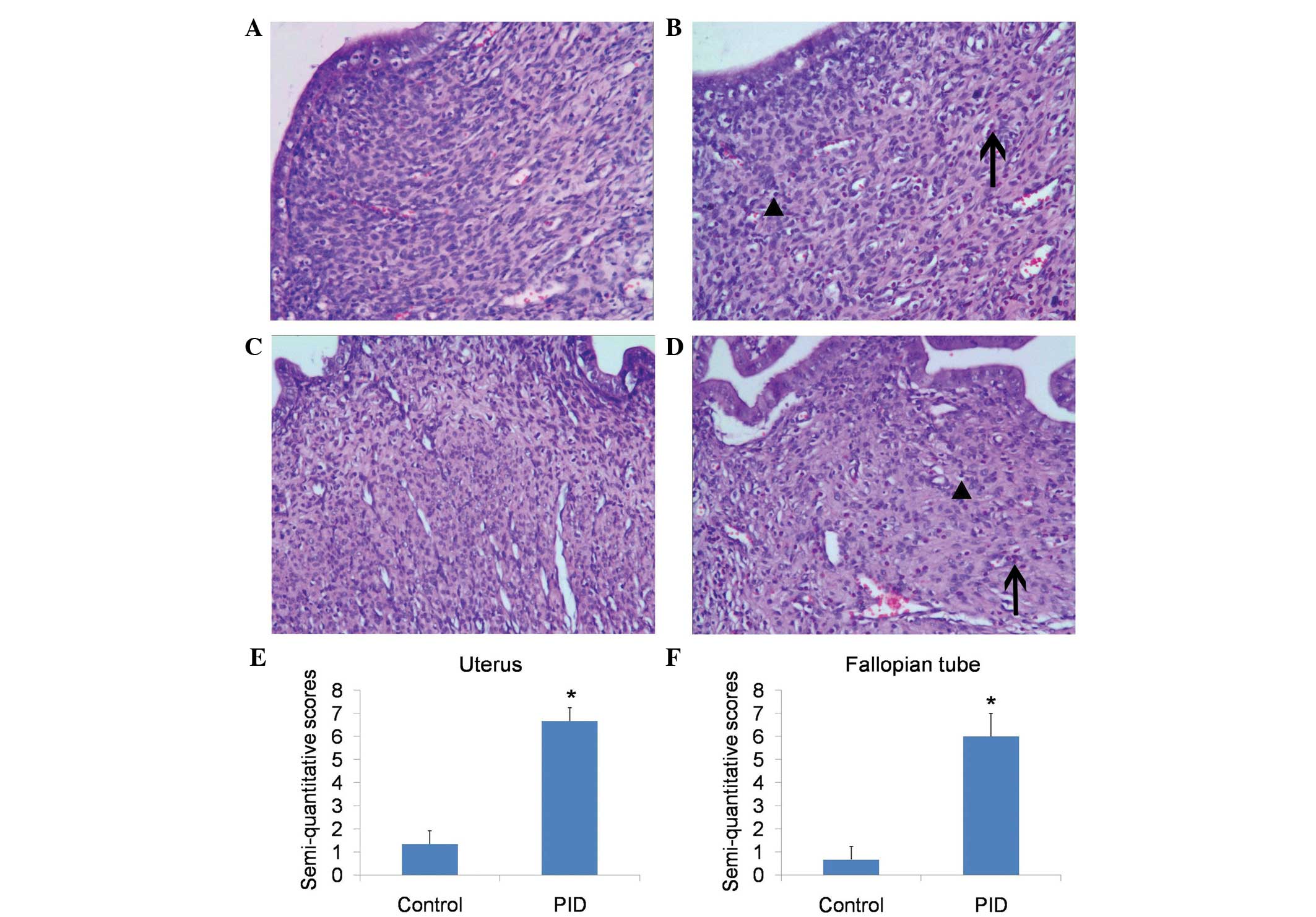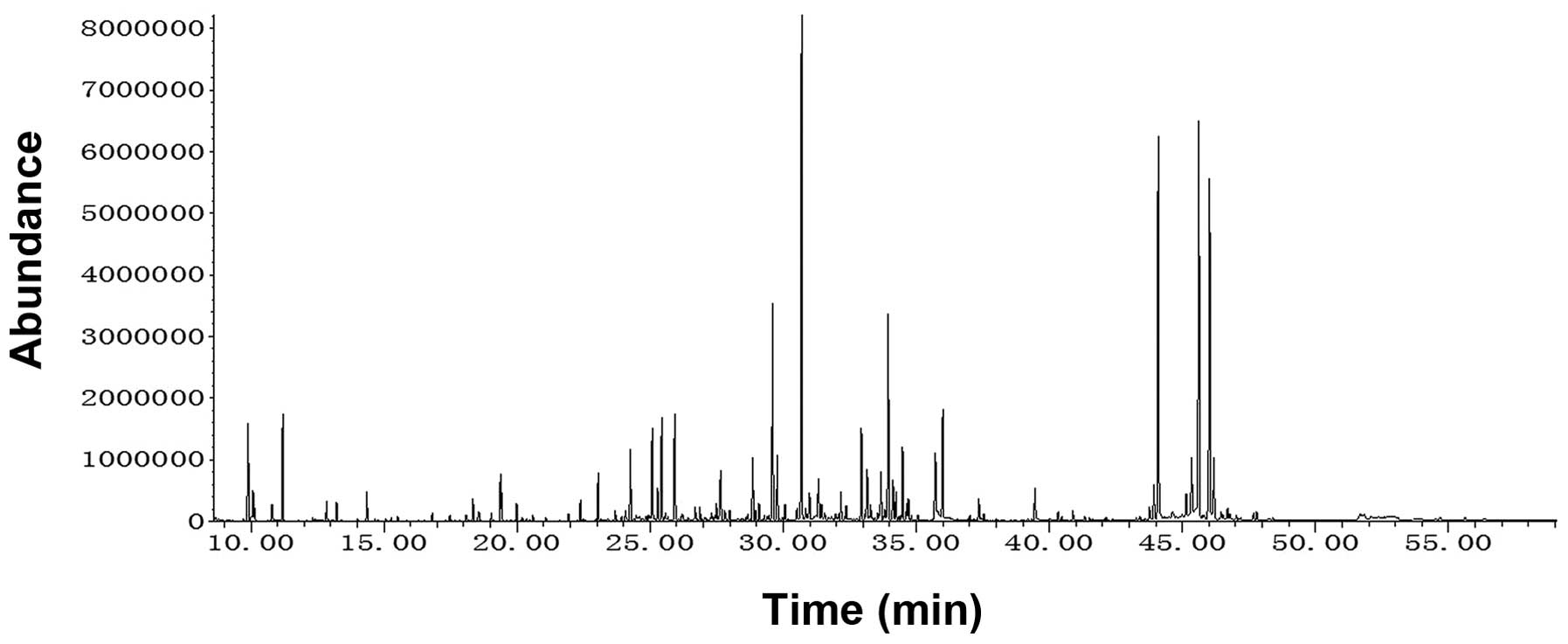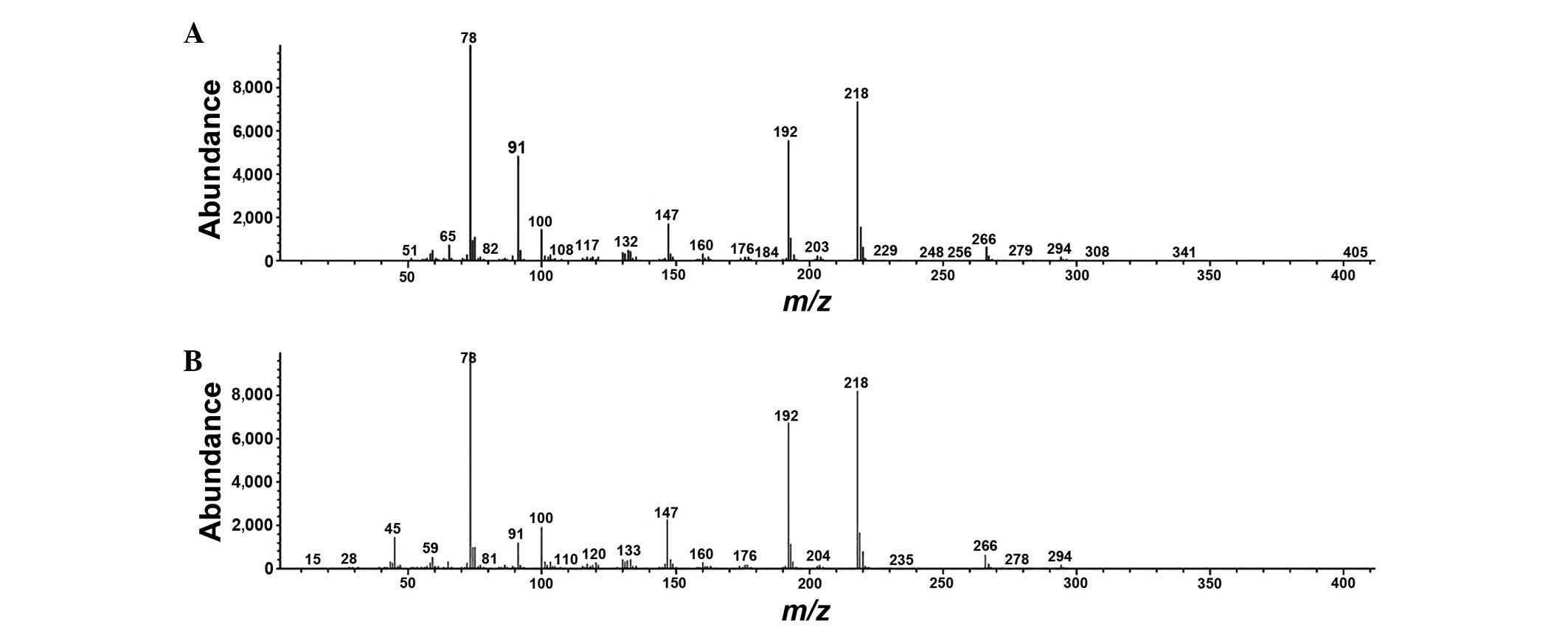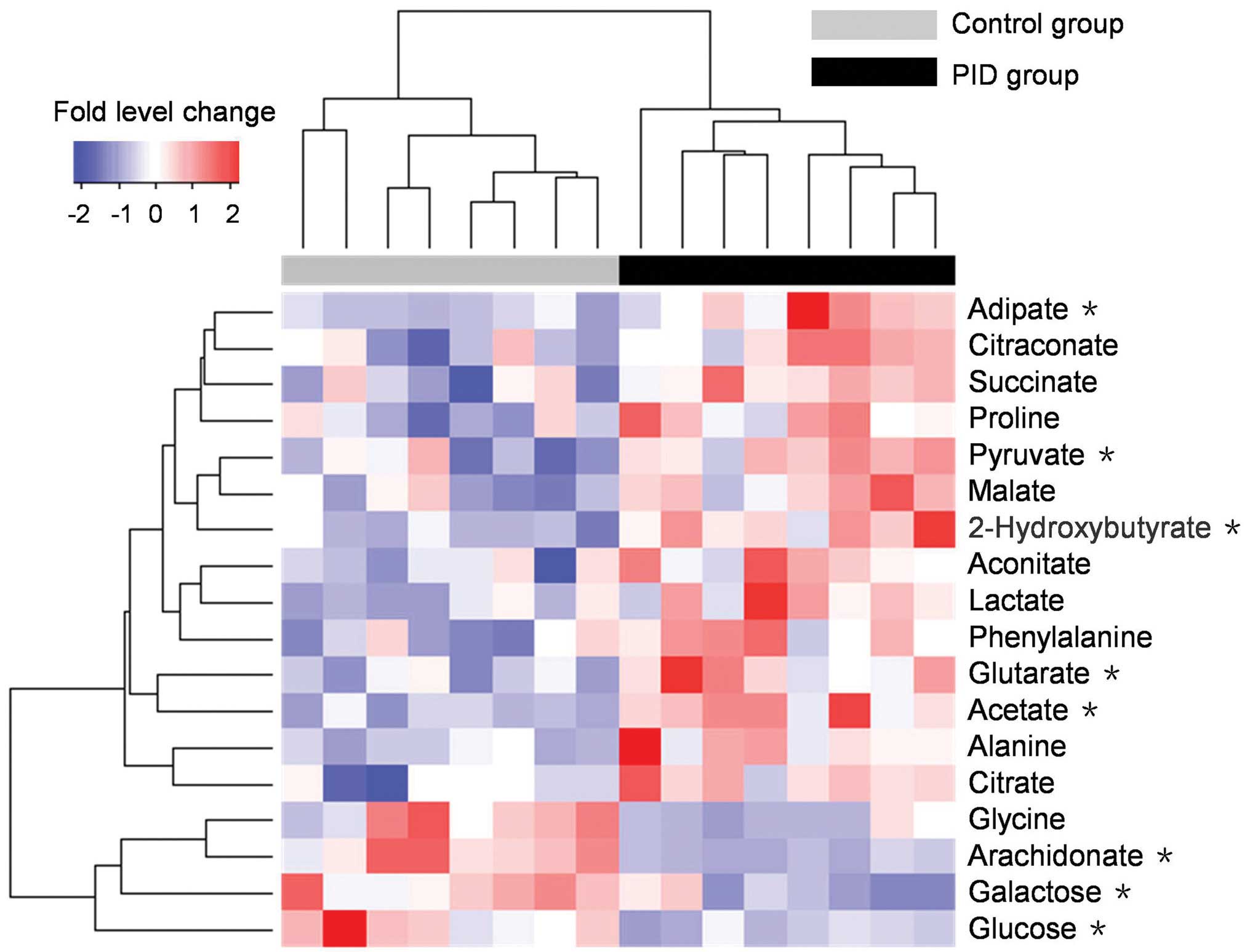|
1
|
World Health Organization: Global
incidence and prevalence of selected curable sexually transmitted
infections: 2008. Reprod Health Matters. 20:207–209. 2012.
View Article : Google Scholar
|
|
2
|
Quentin R and Verdon R: Microbiologic
basis of diagnosis and treatment of pelvic inflammatory disease. J
Gynecol Obstet Biol Reprod (Paris). 41:850–863. 2012.(In French).
View Article : Google Scholar : PubMed/NCBI
|
|
3
|
Saini S, Gupta N Aparna, Batra G and Arora
DR: Role of anaerobes in acute pelvic inflammatory disease. Indian
J Med Microbiol. 21:189–192. 2003.PubMed/NCBI
|
|
4
|
Zhang DZ, Wen JY, Zhou WC and Wu XY:
Pathogenic bacteria distribution and drug resistance isolated from
women with pelvic inflammatory disease. Zhonghua Yi Yuan Gan Ran
Xue Za Zhi. 19:1747–1750. 2009.(In Chinese).
|
|
5
|
Soper DE: Pelvic inflammatory disease.
Obstet Gynecol. 116:419–428. 2010. View Article : Google Scholar : PubMed/NCBI
|
|
6
|
Blenning CE, Muench J, Judkins DZ and
Roberts KT: Clinical inquiries. Which tests are most useful for
diagnosing PID? J Fam Pract. 56:216–220. 2007.PubMed/NCBI
|
|
7
|
Jaiyeoba O and Soper DE: A practical
approach to the diagnosis of pelvic inflammatory disease. Infect
Dis Obstet Gynecol. 2011:7530372011. View Article : Google Scholar : PubMed/NCBI
|
|
8
|
Nicholson JK, Lindon JC and Holmes E:
‘Metabonomics’: Understanding the metabolic responses of living
systems to pathophysiological stimuli via multivariate statistical
analysis of biological NMR spectroscopic data. Xenobiotica.
29:1181–1189. 1999. View Article : Google Scholar : PubMed/NCBI
|
|
9
|
Coen M, Holmes E, Lindon JC and Nicholson
JK: NMR-based metabolic profiling and metabonomic approaches to
problems in molecular toxicology. Chem Res Toxicol. 21:9–27. 2008.
View Article : Google Scholar : PubMed/NCBI
|
|
10
|
Asiago VM, Alvarado LZ, Shanaiah N, Gowda
GA, Owusu-Sarfo K, Ballas RA and Raftery D: Early detection of
recurrent breast cancer using metabolite profiling. Cancer Res.
70:8309–8318. 2010. View Article : Google Scholar : PubMed/NCBI
|
|
11
|
Sreekumar A, Poisson LM, Rajendiran TM,
Khan AP, Cao Q, Yu J, Laxman B, Mehra R, Lonigro RJ, Li Y, et al:
Metabolomic profiles delineate potential role for sarcosine in
prostate cancer progression. Nature. 457:910–914. 2009. View Article : Google Scholar : PubMed/NCBI
|
|
12
|
Sato Y, Suzuki I, Nakamura T, Bernier F,
Aoshima K and Oda Y: Identification of a new plasma biomarker of
Alzheimer's disease using metabolomics technology. J Lipid Res.
53:567–576. 2012. View Article : Google Scholar : PubMed/NCBI
|
|
13
|
Fiehn O, Kopka J, Dormann P, Altmann T,
Trethewey RN and Willmitzer L: Metabolite profiling for plant
functional genomics. Nat Biotechnol. 18:1157–1161. 2000. View Article : Google Scholar : PubMed/NCBI
|
|
14
|
Wiklund S, Johansson E, Sjöström L,
Mellerowicz EJ, Edlund U, Shockcor JP, Gottfries J, Moritz T and
Trygg J: Visualization of GC/TOF-MS-based metabolomics data for
identification of biochemically interesting compounds using OPLS
class models. Anal Chem. 80:115–122. 2008. View Article : Google Scholar : PubMed/NCBI
|
|
15
|
Hong Z, Lin Z, Liu Y, Tan G, Lou Z, Zhu Z,
Chai Y, Fan G, Zhang J and Zhang L: Innovative microwave-assisted
oximation and silylation procedures for metabolomic analysis of
plasma samples using gas chromatography-mass spectrometry. J
Chromatogr A. 1254:14–22. 2012. View Article : Google Scholar : PubMed/NCBI
|
|
16
|
Cai XF, Chen LF, Wang ZL and Gu YE: Effect
of acupoint injection by Astragalus injection on local SIgA
and pathomorphology changes in rats with chronic pelvic
inflammatory disease. Zhongguo Zhong Yao Za Zhi. 31:1361–1364.
2006.(In Chinese). PubMed/NCBI
|
|
17
|
Li X, Guo J, Shi Z and Nie J: Effect of
Fuke Qianjin tablets on inflammatory cytokines in blood serum in
rats with chronic pelvic inflammatory disease. Zhongguo Shi Yan
Fang Ji Xue Za Zhi. 19:226–228. 2013.(In Chinese).
|
|
18
|
Benjamini Y and Hochberg Y: Controlling
the false discovery rate: A practical and powerful approach to
multiple testing. J R Stat Soc Series B Stat Methodol. 57:289–300.
1995.
|
|
19
|
Sonnex C: Toll-like receptors and genital
tract infection. Int J STD AIDS. 21:153–157. 2010. View Article : Google Scholar : PubMed/NCBI
|
|
20
|
He J, You X, Zeng Y, Yu M, Zuo L and Wu Y:
Mycoplasma genitalium-derived lipid-associated membrane proteins
activate NF-kappaB through toll-like receptors 1, 2 and 6 and CD14
in a MyD88-dependent pathway. Clin Vaccine Immunol. 16:1750–1757.
2009. View Article : Google Scholar : PubMed/NCBI
|
|
21
|
Sheldon IM, Rycroft AN, Dogan B, Craven M,
Bromfield JJ, Chandler A, Roberts MH, Price SB, Gilbert RO and
Simpson KW: Specific strains of Escherichia coli are
pathogenic for the endometrium of cattle and cause pelvic
inflammatory disease in cattle and mice. PLoS One. 5:e91922010.
View Article : Google Scholar : PubMed/NCBI
|
|
22
|
Zhou B, Cong L and Sha Y: Pathogens of
transmitted disease in the pathogenesis of acute pelvic
inflammatory disease. Zhonghua Fu Chan Ke Za Zhi. 36:539–541.
2001.(In Chinese). PubMed/NCBI
|
|
23
|
Angerman NS, Evans MI, Moravec WD,
Schumacher GF and Hajj SN: C-reactive protein in the evaluation of
antibiotic therapy for pelvic infection. J Reprod Med. 25:63–66.
1980.PubMed/NCBI
|
|
24
|
Workowski KA and Berman S: Centers for
Disease Control and Prevention (CDC): Sexually transmitted diseases
treatment guidelines, 2010. MMWR Recomm Rep. 59:1–110.
2010.PubMed/NCBI
|
|
25
|
Cheng W, Shivshankar P, Li Z, Chen L, Yeh
IT and Zhong G: Caspase-1 contributes to Chlamydia
trachomatis-induced upper urogenital tract inflammatory
pathologies without affecting the course of infection. Infect
Immun. 76:515–522. 2008. View Article : Google Scholar : PubMed/NCBI
|
|
26
|
Trunov A, Obukhova O, Gorbenko O, Shvayk A
and Trunova L: Cytokines, estradiol and progesterone in the plasma
of women of reproductive age with pelvic inflammatory disease in
remission. Adv Biosci Biotechnol. 4:7272013. View Article : Google Scholar
|
|
27
|
Lee SA, Tsai HT, Ou HC, Han CP, Tee YT,
Chen YC, Wu MT, Chou MC, Wang PH and Yang SF: Plasma
interleukin-1beta, −6, −8 and tumor necrosis factor-alpha as highly
informative markers of pelvic inflammatory disease. Clin Chem Lab
Med. 46:997–1003. 2008. View Article : Google Scholar : PubMed/NCBI
|
|
28
|
Weljie AM, Dowlatabadi R, Miller BJ, Vogel
HJ and Jirik FR: An inflammatory arthritis-associated metabolite
biomarker pattern revealed by 1H NMR spectroscopy. J Proteome Res.
6:3456–3464. 2007. View Article : Google Scholar : PubMed/NCBI
|
|
29
|
Yue R, Zhao L, Hu Y, Jiang P, Wang S,
Xiang L, Liu W, Zhang W and Liu R: Rapid-resolution liquid
chromatography TOF-MS for urine metabolomic analysis of
collagen-induced arthritis in rats and its applications. J
Ethnopharmacol. 145:465–475. 2013. View Article : Google Scholar : PubMed/NCBI
|
|
30
|
Hotter G, Closa D, Prats N, Pi F, Gelpí E
and Roselló-Catafau J: Free radical enhancement promotes leucocyte
recruitment through a PAF and LTB4 dependent mechanism. Free Radic
Biol Med. 22:947–954. 1997. View Article : Google Scholar : PubMed/NCBI
|
|
31
|
Seibert K, Zhang Y, Leahy K, Hauser S,
Masferrer J, Perkins W, Lee L and Isakson P: Pharmacological and
biochemical demonstration of the role of cyclooxygenase 2 in
inflammation and pain. Proc Natl Acad Sci USA. 91:12013–12017.
1994. View Article : Google Scholar : PubMed/NCBI
|
|
32
|
Heinonen PK, Aine R and Seppälä E:
Peritoneal fluid leukotriene B4 and prostaglandin E2 in acute
salpingitis. Gynecol Obstet Invest. 29:292–295. 1990. View Article : Google Scholar : PubMed/NCBI
|
|
33
|
Soga T, Baran R, Suematsu M, Ueno Y, Ikeda
S, Sakurakawa T, Kakazu Y, Ishikawa T, Robert M, Nishioka T and
Tomita M: Differential metabolomics reveals ophthalmic acid as an
oxidative stress biomarker indicating hepatic glutathione
consumption. J Biol Chem. 281:16768–16776. 2006. View Article : Google Scholar : PubMed/NCBI
|
|
34
|
Jana SK, Dutta M, Joshi M, Srivastava S,
Chakravarty B and Chaudhury K: 1H NMR based targeted
metabolite profiling for understanding the complex relationship
connecting oxidative stress with endometriosis. Biomed Res Int.
2013:3290582013. View Article : Google Scholar : PubMed/NCBI
|
|
35
|
Valore EV, Park CH, Igreti SL and Ganz T:
Antimicrobial components of vaginal fluid. Am J Obstet Gynecol.
187:561–568. 2002. View Article : Google Scholar : PubMed/NCBI
|
|
36
|
Krebs HA and Johnson WA: Metabolism of
ketonic acids in animal tissues. Biochem J. 31:645–660. 1937.
View Article : Google Scholar : PubMed/NCBI
|




















